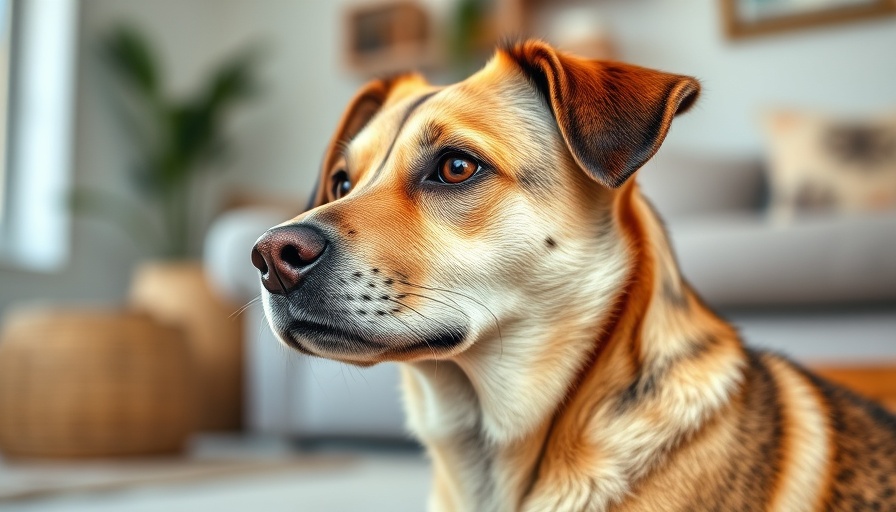
Understanding Your Dog's Anxiety: A Key to Calmness
As responsible pet owners, the emotional well-being of our furry companions often weighs heavily on our hearts. Seeing a dog in distress, whether from loud noises or unexpected changes in their routine, reminds us that they experience anxiety just like we do. By understanding what triggers anxiety in dogs and recognizing their signs, we can take meaningful steps to provide comfort and peace.
Common Triggers of Dog Anxiety
The life of a dog is filled with both joy and stressors. Loud noises, such as thunderstorms and fireworks, rank as major culprits, sending some dogs into a panic. Moreover, sudden life changes, like moving, the loss of a family member, or the introduction of a new pet, can unearth feelings of insecurity. Additionally, separation anxiety plagues many dogs, as they inherently form strong bonds with their human companions.
Signs Your Dog Might Be Anxious
Being attuned to your dog's typical behavior is crucial for identifying anxiety. Common symptoms include excessive panting and drooling, pacing, destructiveness, and unusual clinginess. While one dog may shake during a storm, another may retreat silently. This variance underscores the importance of recognizing your dog's normal demeanor and being on the lookout for any noticeable changes.
Types of Dog Anxiety: A Closer Look
Dog anxiety isn't uniform; it presents itself in numerous ways. Understanding these types allows for more effective strategies. For instance, separation anxiety leads to distress when left alone, while noise phobia affects dogs that react fearfully to certain sounds. Generalized anxiety may appear without clear triggers, and social anxiety typically manifests in discomfort around other dogs or people.
Effective Techniques to Calm Your Anxious Dog
Now that we’re familiar with potential triggers and symptoms, let’s explore effective techniques that can soothe your anxious canine.
- Create a Safe Space: Establishing a cozy bed or crate where your dog can retreat can help them feel secure during stressful moments.
- Consistency in Routine: Dogs thrive on routine. Keeping to a consistent schedule for feeding, walks, and playtime can foster a sense of stability.
- Natural Remedies: Products like CBD oil or calming chews can provide additional comfort, although it's essential to consult with a veterinarian before introducing new supplements.
- Positive Reinforcement Training: Using treats and praise during calm moments can help reinforce the behavior you want to see when your dog experiences potential triggers.
The Role of Physical Activity and Socialization
Ensuring your dog gets enough physical activity is essential for alleviating anxiety. Regular exercise not only strengthens your bond but also releases built-up energy that can contribute to anxiety levels. Additionally, gradual socialization with other dogs and humans can pave the way for more comfort in potentially stressful situations.
When to Consult a Professional
If your dog’s anxiety persists despite your efforts, it may be time to consult with a veterinarian or a certified animal behaviorist. They can provide expert insights and guide you in developing a tailored approach when faced with comprehensive anxiety issues.
In Conclusion: Embracing Calmness Together
As we strive to ease our dogs' anxiety, remember that patience and understanding are key. By applying the techniques discussed and seeking help when needed, you can foster a calmer environment for your beloved pet. Let’s take proactive steps together to help our furry friends live happier, more serene lives. For more tips on dog care, training, and wellness, check out our resources!
 Add Row
Add Row  Add
Add 




Write A Comment